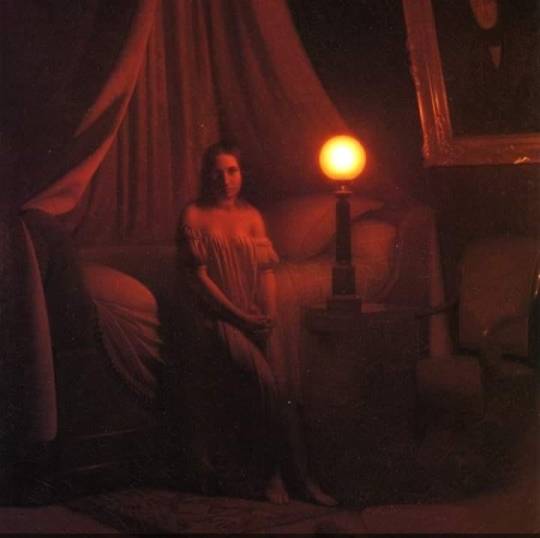#alexandre louis patry
Text
Le Maréchal Berthier : Pilier de l'Empire Napoléonien
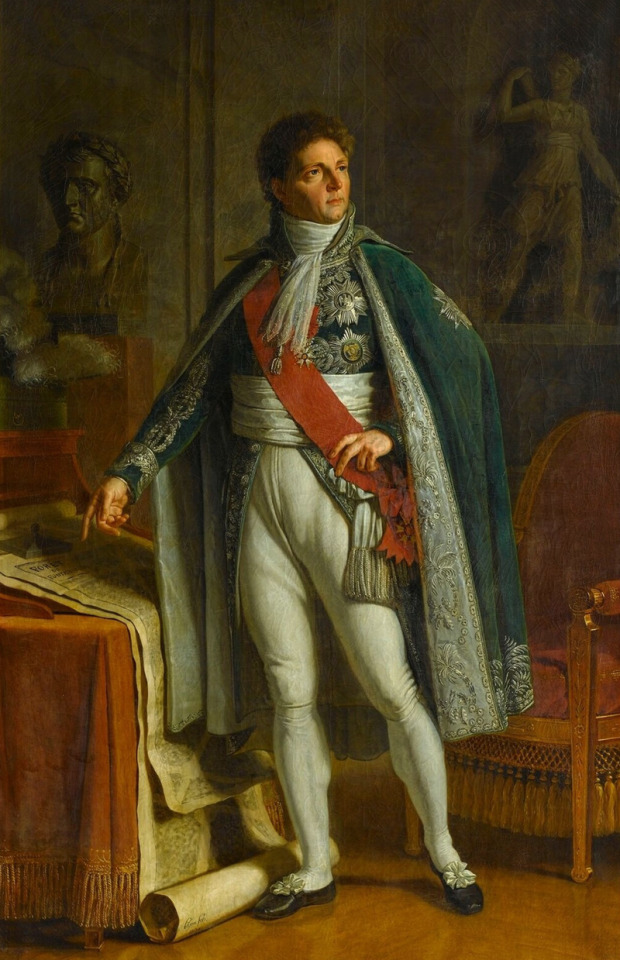
Né le 20 novembre 1753 à Versailles, Louis Alexandre Berthier est bien plus qu'un simple militaire. Sa destinée est intimement liée à celle de Napoléon Bonaparte, forgeant ainsi une alliance indéfectible au service de la France.
Dès son jeune âge, Berthier se distingue par son esprit vif et son dévouement à la patrie. Son ascension fulgurante au sein de l'armée française le mène rapidement à croiser la route du futur Empereur des Français.
Berthier participe sous les ordres de Bonaparte aux campagnes d'Italie puis d'Égypte et soutient le coup d'État du 18 Brumaire.
En tant que chef d'état-major de Napoléon, Berthier joue un rôle crucial dans la planification et l'exécution des campagnes militaires qui ont marqué l'histoire. Sa rigueur tactique et son génie organisationnel contribuent grandement aux victoires éclatantes de l'Empire, malgré son incapacité à diriger lui-même une armée.
La mort tragique de Berthier en 1815, suite à une chute mystérieuse d'une fenêtre de l'hôtel de son épouse à Bamberg, laisse un vide profond dans l'entourage de Napoléon.
Son décès précède en effet de quelques jours la bataille de Waterloo, où l'absence de cet excellent chef d'état-major se fait cruellement sentir pour l'Empereur qui dira de lui : "Nul autre n'eût pu le remplacer"
Berthier décide pourtant de suivre Louis XVIII lors de la Restauration, et adhére même au décret du Sénat qui exclut Napoléon du trône.
***
L'héritage du maréchal Berthier perdure à travers les pages de l'histoire. Son influence indélébile sur la stratégie militaire et l'administration de l'Empire demeure incontestée, faisant de lui l'un des piliers incontournables de l'épopée napoléonienne.
***
Marshal Berthier: Pillar of the Napoleonic Empire
Born on November 20, 1753, in Versailles, Louis Alexandre Berthier is much more than a mere military figure. His destiny is intimately intertwined with that of Napoleon Bonaparte, thus forging an unbreakable alliance in service to France.
From a young age, Berthier distinguished himself with his sharp intellect and dedication to his homeland. His rapid ascent within the French army quickly led him to cross paths with the future Emperor of the French.
Berthier participated under Bonaparte's command in the campaigns in Italy and Egypt, and supported the coup d'état of the 18th Brumaire.As Napoleon's chief of staff, Berthier played a crucial role in the planning and execution of military campaigns that have left an indelible mark on history. His tactical rigor and organizational genius greatly contributed to the Empire's resounding victories, despite his own inability to lead an army himself.
The tragic death of Berthier in 1815, following a mysterious fall from a window of his wife's hotel in Bamberg, left a profound void in Napoleon's inner circle.Indeed, his death preceded by a few days the Battle of Waterloo, where the absence of this excellent chief of staff was keenly felt by the Emperor who said of him: "No other could have replaced him."
However, Berthier decided to follow Louis XVIII during the Restoration, and even adhered to the Senate decree which excluded Napoleon from the throne.
***
The legacy of Marshal Berthier endures through the pages of history. His indelible influence on military strategy and the administration of the Empire remains unquestioned, making him one of the indispensable pillars of the Napoleonic epic.
#bonaparte#france#napoleon#napoleon bonaparte#guerre#soldats#Maréchal#Berthier#louis alexandre berthier#napoleonic wars#napoleonic era#napoleonic
20 notes
·
View notes
Text

Souvenirs. Alexandre Louis Patry. c. 1839 C.E. Oil on canvas.
#alexandre louis patry#19th century#1830s#painting#art history#oil#canvas#woman#portrait#interior#bedroom
279 notes
·
View notes
Text
15 nominations pour LA DÉESSE DES MOUCHES À FEU au Gala Québec Cinéma 2021

Une autre année pas comme les autres pour le Gala Québec Cinéma, alors que les salles ont longtemps été fermées, ce qui n’a pas empêché une vingtaine de longs métrages de fiction de prendre l’affiche.
Dans la catégorie Meilleur film, on retrouve quatre des films qui ont été le plus vus et appréciés, soit Le club Vinland, La déesse des mouches à feu, My Salinger Year et Nadia Butterly, ainsi que Souterrain, dont la sortie a été maintes fois reportée, mais qui sera le film d’ouverture des Rendez-vous Québec Cinéma cette semaine.

Alignement semblable dans la catégorie Meilleure réalisation, avec Anaïs Barbeau-Lavalette (La déesse des mouches à feu), Sophie Dupuis (Souterrain), Philippe Falardeau (My Salinger Year) et Benoit Pilon (Le club Vinland), mais l’industrie a préféré Daniel Roby (Target Number One) à Pascal Plante (Nadia Butterly).
Dans la catégorie Meilleur scénario, encore là, les gros joueurs sont tous là: Normand Bergeron, Benoit Pilon, Marc Robitaille – Le club Vinland, Sophie Dupuis – Souterrain, Philippe Falardeau – My Salinger Year, Catherine Léger – La déesse des mouches à feu, Daniel Roby – Target Number One.
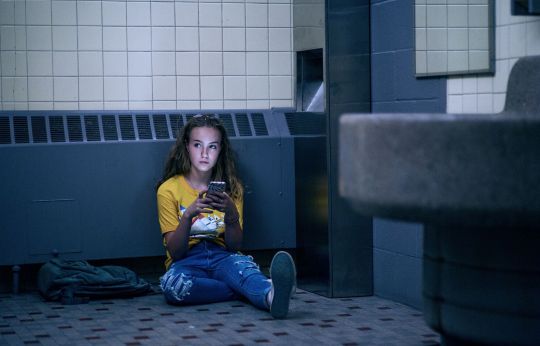
Du côté des actrices, on retrouve Émilie Bierre pour Les nôtres, Marie-Evelyne Lessard pour Jusqu’au déclin, l’actrice américaine Margaret Qualley pour My Salinger Year, Karelle Tremblay pour la coproduction Death of a Ladies’ Man, ainsi que Sarah Sutherland pour Like a House on Fire.
Les acteurs en lice pour l’Iris sont Réal Bossé pour Jusqu’au déclin, Paul Doucet pour Les nôtres, Patrick Hivon pour Mont Foster, Antoine Olivier Pilon pour Target Number One, et Sébastien Ricard pour Le club Vinland.
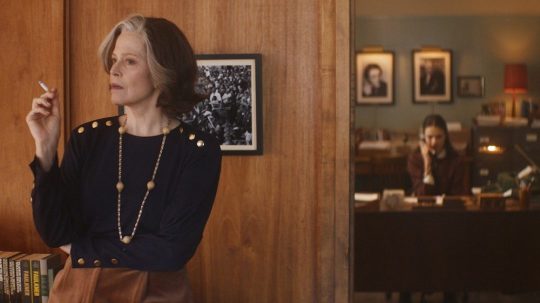
Dans les catégories « rôle de soutien », on retrouve Sophie Desmarais pour Vacarme, Marianne Farley pour Les nôtres, Éléonore Loiselle et Caroline Néron pour La déesse des mouches à feu, et la mythique Sigourney Weaver pour My Salinger Year chez les dames.
Chez ces messieurs, les finalistes sont Normand D’Amour et Robin L’Houmeau pour La déesse des mouches à feu, Rémy Girard pour Le club Vinland, ainsi que James Hyndman et Théodore Pellerin pour Souterrain.

La catégorie Révélation de l’année est l’une des plus intéressantes selon moi, car c’est un aperçu des visages marquants du cinéma des prochaines années. D’ailleurs, Émilie Bierre et Théodore Pellerin, en nomination cette année respectivement pour un premier rôle féminin et un rôle de soutien masculin, font partie des lauréats passés du prix Révélation. Donc, en 2021, les finalistes sont : Kelly Depeault – La déesse des mouches à feu, Jasmine Lemée – Mon cirque à moi, Rosalie Pépin – Vacarme, Joakim Robillard – Souterrain et Arnaud Vachon – Le club Vinland.
Voici le reste des catégories :
MEILLEURE DISTRIBUTION DES RÔLES
Iris de la Meilleure distribution des rôles
Deirdre Bowen (Deirdre Bowen Casting) | Heidi Levitt (Heidi Levitt Casting) | Bruno Rosato (Rosato Casting) | Supattra « Pum » Punyadee – Target Number One
Marjolaine Lachance (Balustrade casting) – Les Nôtres
Marjolaine Lachance (Balustrade casting) – Souterrain
Murielle La Ferrière, Marie-Claude Robitaille (Casting Murielle La Ferrière et Marie-Claude Robitaille) – La déesse des mouches à feu
Pierre Pageau, Daniel Poisson (Gros Plan) – Le Club Vinland
MEILLEURE DIRECTION ARTISTIQUE
Iris de la Meilleure direction artistique
Patrice Bengle, Louise Tremblay – Le Club Vinland
Elise de Blois, Claude Tremblay – My Salinger Year
Sylvain Lemaitre, Louisa Schabas – Blood Quantum
David Pelletier – Mon cirque à moi
David Pelletier – Target Number One
MEILLEURE DIRECTION DE LA PHOTOGRAPHIE
Iris de la Meilleure direction de la photographie
Jonathan Decoste – La déesse des mouches à feu
François Gamache – Le Club Vinland
Mathieu Laverdière – Souterrain
Tobie Marier Robitaille – La nuit des rois
Sara Mishara – My Salinger Year
MEILLEUR SON
Iris du Meilleur son
Pierre-Jules Audet, Emmanuel Croset, Michel Tsagli – La nuit des rois
Sylvain Bellemare, Paul Col, Bernard Gariépy Strobl, Martyne Morin – La déesse des mouches à feu
Sylvain Bellemare, Bernard Gariépy Strobl, François Grenon – Jusqu’au déclin
Stéphane Bergeron, Olivier Calvert, Martyne Morin – Nadia, Butterfly
Luc Boudrias, Frédéric Cloutier, Patrice LeBlanc – Souterrain
MEILLEUR MONTAGE
Iris du Meilleur montage
Aube Foglia – La nuit des rois
Michel Grou – Souterrain
Stéphane Lafleur – La déesse des mouches à feu
Arthur Tarnowski – Jusqu’au déclin
Yvann Thibaudeau – Target Number One
MEILLEURS EFFETS VISUELS
Iris des Meilleurs effets visuels
Alchimie 24 – Sébastien Chartier, Jean-François « Jafaz » Ferland, Marie-Claude Lafontaine – Jusqu’au déclin
Real by Fake – Michael Beaulac, Marie-Hélène Panisset – Target Number One
The Workshop – Barbara Rosenstein, Josh Sherrett – Blood Quantum
MEILLEURE MUSIQUE ORIGINALE
Iris de la Meilleure musique originale
Olivier Alary – La nuit des rois
Patrice Dubuc, Gaëtan Gravel – Souterrain
Guido Del Fabbro, Pierre Lapointe – Le Club Vinland
Jean-Phi Goncalves, Éloi Painchaud, Jorane Pelletier – Target Number One
Martin Léon – My Salinger Year
MEILLEURS COSTUMES
Iris des Meilleurs costumes
Caroline Bodson – Souterrain
Francesca Chamberland – Le Club Vinland
Patricia McNeil, Ann Roth – My Salinger Year
Noémi Poulin – Blood Quantum
Sharon Scott – Mon cirque à moi
MEILLEUR MAQUILLAGE
Iris du Meilleur maquillage
Kathryn Casault – La déesse des mouches à feu
Dominique T. Hasbani – Jusqu’au déclin
Audray Adam, Sandra Ruel – Souterrain
Joan-Patricia Parris, Nancy Ferlatte, Erik Gosselin – Blood Quantum
Larysa Chernienko, Natalie Trépanier – Target Number One
MEILLEURE COIFFURE
Iris de la Meilleure coiffure
Michelle Côté – My Salinger Year
Stéphanie DeFlandre – Mon cirque à moi
André Duval – Le Club Vinland
Marcelo Padovani – Blood Quantum
Johanne Paiement – La déesse des mouches à feu
MEILLEUR FILM DOCUMENTAIRE
Iris du Meilleur film documentaire
Errance sans retour – Mélanie Carrier, Olivier Higgins | Mö Films – Mélanie Carrier, Olivier Higgins
The Forbidden Reel – Ariel Nasr | Office national du film du Canada – Kat Baulu | Loaded Pictures – Sergeo Kirby | Ariel Nasr
Je m’appelle humain – Kim O’Bomsawin | Terre Innue – Andrée-Anne Frenette
Tant que j’ai du respir dans le corps – Steve Patry | Les Films de l’Autre – Steve Patry
Wintopia – Mira Burt-Wintonick | Office national du film du Canada – Annette Clarke | EyeSteelFilm – Bob Moore
MEILLEURE DIRECTION DE LA PHOTOGRAPHIE | FILM DOCUMENTAIRE
Iris de la Meilleure direction de la photographie | Film documentaire
Sarah Baril Gaudet – Passage
Hugo Gendron, Michel Valiquette – Je m’appelle humain
Olivier Higgins, Renaud Philippe – Errance sans retour
Mathieu Perrault Lapierre – The 108 Journey
Marianne Ploska – Prière pour une mitaine perdue
MEILLEUR SON | FILM DOCUMENTAIRE
Iris du Meilleur son | Film documentaire
Pierre-Jules Audet, Luc Boudrias, Olivier Higgins, Kala Miya – Errance sans retour
Stéphane Barsalou, Claude Beaugrand, Julie Innes – Le château
Marie-Andrée Cormier, Olivier Germain, Marie-Pierre Grenier – Prière pour une mitaine perdue
Benoît Dame, Catherine Van Der Donckt – Jongué, carnet nomade
Olivier Germain, Marie-Pierre Grenier – Wintopia
MEILLEUR MONTAGE | FILM DOCUMENTAIRE
Iris du Meilleur montage | Film documentaire
Anouk Deschênes – Wintopia
Olivier Higgins, Amélie Labrèche – Errance sans retour
Annie Jean – Le château
Annie Jean – The Forbidden Reel
Alexandre Lachance – Je m’appelle humain
MEILLEURE MUSIQUE ORIGINALE | FILM DOCUMENTAIRE
Iris de la Meilleure musique originale | Film documentaire
Tom Brunt – Prière pour une mitaine perdue
Martin Dumais – Errance sans retour
Justin Guzzwell, Tyr Jami, Eric Shaw – Sisters: Dream & Variations
Mathieu Perrault Lapierre – The 108 Journey
Claude Rivest – Jongué, carnet nomade
MEILLEUR COURT MÉTRAGE | FICTION
Iris du Meilleur court métrage | Fiction
Aniksha – Vincent Toi | Vincent Toi, Guillaume Collin
Comme une comète – Ariane Louis-Seize | Colonelle films – Fanny Drew, Sarah Mannering
Écume – Omar Elhamy | Les Films Rôdeurs – Jonathan Beaulieu-Cyr, Paul Chotel
Goodbye Golovin – Mathieu Grimard | Golovin Films – Simon Corriveau-Gagné, Mathieu Grimard
Lune – Zoé Pelchat | MéMO Films – Mélanie S. Dubois
MEILLEUR COURT MÉTRAGE | ANIMATION
Iris du Meilleur court métrage | Animation
Barcelona de Foc – Theodore Ushev | Theodore Ushev
The Fourfold – Alisi Telengut | Alisi Telengut
In the Shadow of the Pines – Anne Koizumi | Nava Projects – Sahar Yousefi
Moi, Barnabé – Jean-François Lévesque | Office national du film du Canada – Julie Roy
La saison des hibiscus – Éléonore Goldberg | Embuscade films – Nicolas Dufour-Laperrière
MEILLEUR COURT MÉTRAGE | DOCUMENTAIRE
Iris du Meilleur court métrage | Documentaire
Clebs – Halima Ouardiri | Halima Ouardiri
Le frère – Jérémie Battaglia | Les Films Extérieur Jour – Amélie Lambert Bouchard
Life of a Dog – Danae Elon, Rosana Matecki | Entre deux mondes Productions – Paul Cadieux, Danae Elon
Nitrate – Yousra Benziane | Yousra Benziane
Port d’attache – Laurence Lévesque | Elise Bois
PRIX DU PUBLIC
Le Club Vinland – Benoit Pilon | Normand Bergeron, Benoit Pilon, Marc Robitaille | Les Films Opale | Productions Avenida – Chantal Lafleur
La déesse des mouches à feu – Anaïs Barbeau-Lavalette | Catherine Léger | Entract Films | Coop Vidéo de Montréal – Luc Vandal
Félix et le trésor de Morgäa – Nicola Lemay | Marc Robitaille | Maison 4:3 | 10e Ave Productions – Nancy Florence Savard
Flashwood – Jean-Carl Boucher | Jean-Carl Boucher | Entract Films | Go Films – Jean-Carl Boucher, Nicole Robert
Jusqu’au déclin – Patrice Laliberté | Charles Dionne, Nicolas Krief, Patrice Laliberté | Netflix | Couronne Nord – Julie Groleau
Like a House on Fire – Jesse Noah Klein | Jesse Noah Klein | Entract Films | Colonelle films – Fanny Drew, Sarah Mannering | Woods Entertainment – William Woods
Mon cirque à moi – Miryam Bouchard | Miryam Bouchard, Martin Forget | Les Films Séville | Attraction Images – Antonello Cozzolino
Mont Foster – Louis Godbout | Louis Godbout | K-Films Amérique | Les Films Primatice – Sébastien Poussard
My Salinger Year – Philippe Falardeau | Philippe Falardeau | Métropole Films | micro_scope – Luc Déry, Kim McCraw | Parallel Films – Ruth Coady, Susan Mullen
Nadia, Butterfly – Pascal Plante | Pascal Plante | Maison 4:3 | Némésis Films – Dominique Dussault
Les Nôtres – Jeanne Leblanc | Judith Baribeau, Jeanne Leblanc, | Maison 4:3 | Slykid & Skykid – Benoit Beaulieu, Marianne Farley
Rustic Oracle – Sonia Bonspille Boileau | Sonia Bonspille Boileau | 7th Screen | Nish Media – Jason Brennan
Le sang du pélican – Denis Boivin | Denis Boivin | Les Distributions Netima | Productions Dionysos – Denis Boivin
Slaxx – Elza Kephart | Patricia Gomez Zlatar, Elza Kephart | Filmoption International | EMAfilms – Anne-Marie Gélinas | Head on the Door Productions – Patricia Gomez Zlatar
Target Number One – Daniel Roby | Daniel Roby | Les Films Séville | Caramel Films – Valérie d’Auteuil, André Rouleau
We Had It Coming – Paul Barbeau | Paul Barbeau | MK2 Mile End | Reprise Films – Melissa A. Smith, Paul Barbeau
IRIS HOMMAGE
Association coopérative de productions audiovisuelles (ACPAV)
Représentée par Marc Daigle et Bernadette Payeur
#gala québec cinéma#la déesse des mouches à feu#target number one#émilie bierre#sigourney weaver#souterrain
6 notes
·
View notes
Photo
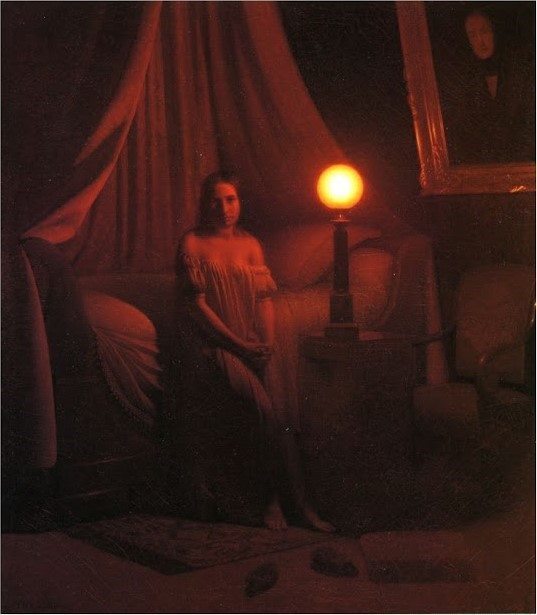
Alexandre Louis Patry (1810-1879), Souvenirs (Memories), 1839
40 notes
·
View notes
Text

Souvenir, oil on canvas, 1839 (130.8 cm x 114.3 cm) Alendre-Louis Patry
0 notes
Text
Les XX and music Conservatoire de Paris Paul Marie Théodore Vincent d'Indy (French, 1851–1931) Poème des rivages (1919-21) on Kant sublime and Vincent Willem van Gogh (Dutch, 1853–1890)
Les XX and music Conservatoire de Paris Paul Marie Théodore Vincent d'Indy (French, 1851–1931) Poème des rivages (1919-21) on Kant sublime and Vincent Willem van Gogh (Dutch, 1853–1890)
Paul Marie Théodore Vincent d'Indy (French: [vɛ̃sɑ̃ dɛ̃di]; 27 March 1851 – 2 December 1931) was a French composer and teacher.
Vincent d'Indy, ca. 1895
https://en.wikipedia.org/wiki/Vincent_d%27Indy#/media/File:D%27Indi_Vincent_Postcard-1910.jpg
Life[edit]
Paul Marie Théodore Vincent d'Indy was born in Paris into an aristocratic family of royalist and Catholic persuasion. He had piano lessons from an early age from his paternal grandmother, who passed him on to Antoine François Marmontel and Louis Diémer.[1] From the age of 14 he studied harmony with Albert Lavignac. At age 19, during the Franco-Prussian War, he enlisted in the National Guard, but returned to musical life as soon as the hostilities were over. The first of his works he heard performed was a Symphonie italienne, at an orchestral rehearsal under Jules Pasdeloup; the work was admired by Georges Bizet and Jules Massenet, with whom he had already become acquainted.[1] On the advice of Henri Duparc, he became a devoted student of César Franck at the Conservatoire de Paris. As a follower of Franck, d'Indy came to admire what he considered the standards of German symphonism.
Vincent d'Indy, sculpture by Antoine Bourdelle
In the summer of 1873 he visited Germany, where he met Franz Liszt and Johannes Brahms.[1] On 25 January 1874 his overture Les Piccolomini was performed at a Pasdeloup concert, sandwiched between works by Bach and Beethoven.[1] Around this time he married Isabelle de Pampelonne, one of his cousins. In 1875 his symphony dedicated to János Hunyadi was performed. That same year he played a minor role – the prompter – at the premiere of Bizet's opera Carmen.[1] In 1876 he was present at the first production of Richard Wagner's Ring Cycle at Bayreuth. This made a great impression on him and he became a fervent Wagnerite. In 1878 d'Indy's symphonic ballad La Forêt enchantée was performed. In 1882 he heard Wagner's Parsifal. In 1883 his choral work Le Chant de la cloche appeared. In 1884 his symphonic poem Saugefleurie was premiered. His piano suite ("symphonic poem for piano") called Poème des montagnes came from around this time. In 1887 appeared his Suite in D for trumpet, 2 flutes and string quartet. That same year he was involved in Lamoureux's production of Wagner's Lohengrin as choirmaster. His music drama Fervaal occupied him between 1889 and 1895.
Inspired by his own studies with Franck and dissatisfied with the standard of teaching at the Conservatoire de Paris, d'Indy, together with Charles Bordes and Alexandre Guilmant, founded the Schola Cantorum de Paris in 1894. D'Indy taught there and later at the Paris Conservatoire until his death. Among his many students were Isaac Albéniz, Leo Arnaud, Joseph Canteloube (who later wrote d'Indy's biography), Pierre Capdevielle, Jean Daetwyler, Arthur Honegger, Eugène Lapierre, Leevi Madetoja, Albéric Magnard, Rodolphe Mathieu, Darius Milhaud, Helena Munktell, Cole Porter, Albert Roussel, Erik Satie, Georges-Émile Tanguay, Otto Albert Tichý, Emiliana de Zubeldia and Xian Xinghai, Ahmet Adnan Saygun. Xian was one of the earliest Chinese composers of western classical music See: List of music students by teacher: C to F#Vincent d'Indy. While A. A. Saygun became one of the pioneers of classical music in Turkey.
Few of d'Indy's works are performed regularly today. His best known pieces are probably the Symphony on a French Mountain Air (Symphonie sur un chant montagnard français, also known as Symphonie cévenole) for piano and orchestra (1886), and Istar (1896), a symphonic poem in the form of a set of variations in which the theme appears only at the end.[1]
Vincent d'Indy in 1913.
Among d'Indy's other works are other orchestral music (including a Symphony in B♭, a vast symphonic poem, Jour d'été à la montagne, and another, Souvenirs, written on the death of his first wife; he later remarried), chamber music, including two of the most highly regarded string quartets of the latter nineteenth century (No. 2 in E major, Op. 45, and No. 3 in D-flat, Op. 96), piano music (including a Sonata in E minor), songs and a number of operas, including Fervaal (1897) and L'Étranger (1902). His music drama Le Légende de Saint Christophe, based on themes from Gregorian chant, was performed for the first, and possibly last, time, on 6 June 1920. His comédie musicale had its premiere in paris on 10 June 1927. His Lied for cello and orchestra, Op. 19, was recorded by Julian Lloyd Webber and the English Chamber Orchestra conducted by Yan Pascal Tortelier in 1991. As well as Franck, d'Indy's works show the influence of Berlioz and especially of Wagner.
D'Indy helped revive a number of then largely forgotten early works, for example, making his own edition of Claudio Monteverdi's opera L'incoronazione di Poppea.
His musical writings include the co-written three-volume Cours de composition musicale (1903–1905), as well as studies of Franck and Beethoven.
D'Indy died where he was born, in Paris.
Political views[edit]
D'Indy was a committed monarchist, joining the League of la Patrie française during the Dreyfus affair. He was anti-Semitic, but did not extend this bias to his Jewish colleagues.[1]
Critical reaction[edit]
Vincent d'Indy, photo: Library of Congress
Opera critic Arthur Elson, writing in 1901, while appreciating d'Indy, prefers another composer.[2]:343–44
Of the younger men, Vincent d'Indy (1851– ) has shown himself abreast of the times, and his Fervaal, with a libretto of "rhythmic prose," is a worthy example of the school of operatic realism and musical complexity. [...] But the most prominent composer for the Paris stage at present is Alfred Bruneau. [...] [I]n Le Réve [sic] (1891), on a libretto from Zola's novel, he began the career that has won him his present position.
In a post-Wagner age under "the artistic domination of Bayreuth," Elson describes two "paths" in contemporary opera, one path being more conservative[2]:350–51
while the other has led to the uttermost regions of modern polyphony and dissonance. [...] Among the more radical group, corresponding to Bruneau, d'Indy and Franck, the most daring work has been done by Richard Strauss.
In Elson's opinion, those following the more conservative path are Cornelius, Goetz, Humperdinck, Goldmark, Saint-Saëns and Massenet.
Legacy[edit]
The private music college École de musique Vincent-d'Indy in Montreal, Canada, is named after the composer, as is the asteroid 11530 d’Indy.
https://en.wikipedia.org/wiki/Vincent_d%27Indy
Symphony on a French Mountain Air, Op. 25 by Vincent D’indy (1886)
https://youtu.be/ojHuauK7vlg
Vincent d'Indy Poème des rivages Op.77 (1919-21) Part I
https://youtu.be/SnPH-6mim60
Movements/Sections 4 movements
Calme et Lumière. Agay (Méditerranée)
La joie du bleu profond. Miramar de Mallorca (Méditerranée)
Horizons verts. Falconara (Adriatique)
Le mystère de l'Océan. La Grande Côte (Golfe de Gascogne)
http://imslp.org/wiki/Poème_des_rivages%2C_Op.77_(Indy%2C_Vincent_d%27)
The Conservatoire de Paris (pronounced [kɔ̃.sɛʁ.va.twaʁ də pa.ʁi]; English: Paris Conservatory) is a college of music and dance founded in 1795 associated with PSL Research University. It is situated in the avenue Jean Jaurès in the 19th arrondissement of Paris, France. The Conservatoire offers instruction in music, dance, and drama, drawing on the traditions of the "French School".
In 1946 it was split in two, one part for acting, theatre and drama, known as the Conservatoire national supérieur d'art dramatique (CNSAD), and the other for music and dance, known as the Conservatoire national supérieur de musique et de danse de Paris (CNSMDP). Today the conservatories operate under the auspices of the Ministry of Culture and Communication.
Franco-Prussian War and the Third Republic[edit]
In the Franco-Prussian War, during the siege of Paris (September 1870 – January 1871), the Conservatory was used as a hospital. On 13 May 1871, the day after Auber's death, the leaders of the Paris Commune appointed Francisco Salvador-Daniel as the director - however Daniel was shot and killed ten days later by the troops of the French Army. He was replaced by Ambroise Thomas, who remained in the post until 1896. Thomas's rather conservative directorship was vigorously criticized by many of the students, notably Claude Debussy.[2]
Piano class of Charles de Bériot in 1895 with Maurice Ravel on the left
During this period César Franck was ostensibly the organ teacher, but was actually giving classes in composition. His classes were attended by several students who were later to become important composers, including Ernest Chausson, Guy Ropartz, Guillaume Lekeu, Charles Bordes, and Vincent d'Indy.[2]
Théodore Dubois succeeded Thomas after the latter's death in 1896. Professors included Charles-Marie Widor, Gabriel Fauré, and Charles Lenepveu for composition, Alexandre Guilmant for organ, Paul Taffanel for flute, and Louis Diémer for piano.[2]
Gabriel Fauré[edit]
Fauré in his office at the Conservatoire, 1918
Lenepveu had been expected to succeed Dubois as director, but after the "Affaire Ravel" in 1905, Ravel's teacher Gabriel Faurébecame director. Le Courier Musical (15 June 1905) wrote: "Gabriel Fauré is an independent thinker: that is to say, there is much we can expect from him, and it is with joy that we welcome his nomination."[14]
Fauré appointed forward-thinking representatives (such as Debussy, Paul Dukas, and André Messager) to the governing council, loosened restrictions on repertoire, and added conducting and music history to the courses of study. Widor's composition students during this period included Darius Milhaud, Arthur Honegger, and Germaine Tailleferre. Other students included Lili Boulanger and Nadia Boulanger. New to the staff were Alfred Cortot for piano and Eugène Gigout for organ.[2]
The modern era[edit]
The CNSMDP new building at the Cité de la Musique.
The Conservatory moved to facilities at 14 rue de Madrid in 1911.[2]
Henri Rabaud succeeded Fauré in 1920 and served until 1941. Notable students were Olivier Messiaen, Jean Langlais, and Jehan Alain. Staff included Dukas and Jean Roger-Ducasse for composition, Marcel Dupré for organ, Marcel Moyse for flute, and Claire Croiza for singing.[2]
Claude Delvincourt was director from 1941 until his tragic death in an automobile accident in 1954. Delvincourt was a progressive administrator, adding classes in harpsichord, saxophone, percussion, and the Ondes Martenot. Staff included Milhaud for composition and Messiaen for analysis and aesthetics. In 1946, the dramatic arts were transferred to a separate institution (CNSAD). Delvincourt was succeeded by Dupré in 1954, Raymond Loucheur in 1956, Raymond Gallois-Montbrun in 1962, Marc Bleuse in 1984, and Alain Louvier in 1986. Plans to move the Conservatory of Music and Dance to more modern facilities in the Parc de la Villette were initiated under Bleuse and completed under Louvier. It opened as part of the Cité de la Musique in September 1990.[2]
Currently, the conservatories train more than 1,200 students in structured programs, with 350 professors in nine departments.
https://en.wikipedia.org/wiki/Conservatoire_de_Paris
Les XX was founded on 28 October 1883 in Brussels and held annual shows there between 1884 and 1893, usually in January–March. The group was founded by 11 artists who were unhappy with the conservative policies of both the official academic Salon and the internal bureaucracy of L'Essor, under a governing committee of twenty members. Unlike L'Essor ('Soaring'), which had also been set up in opposition to the Salon, Les XX had no president or governing committee. Instead Octave Maus (a lawyer who was also an art critic and journalist) acted as the secretary of Les XX, while other duties, including the organization of the annual exhibitions, were dispatched by a rotating committee of three members. A further nine artists were invited to join to bring the group membership of Les XX to twenty; in addition to the exhibits of its Belgian members, foreign artists were also invited to exhibit.[1]
There was a close tie between art, music and literature among the Les XX artists, during the exhibitions, there were literary lectures and discussions, and performances of new classical music, which from 1888 were organised by Vincent d'Indy,[2] with from 1889 until the end in 1893 very frequent performances by the Quatuor Ysaÿe.[3] Concerts included recently composed music by Claude Debussy, Ernest Chausson and Gabriel Fauré. Leading exponents of the Symbolist movement who gave lectures include Stéphane Mallarmé, Théodore de Wyzewa and Paul Verlaine.[1]
https://wikivisually.com/wiki/Les_XX
Vincent Willem van Gogh (Dutch, 1853–1890)
Self-Portrait, 1887, Art Institute of Chicago
https://en.wikipedia.org/wiki/Vincent_van_Gogh#/media/File:Vincent_van_Gogh_-_Self-Portrait_-_Google_Art_Project_(454045).jpg
Flowering Plum Orchard (after Hiroshige), 1887. Van Gogh Museum, Amsterdam
https://en.wikipedia.org/wiki/Vincent_van_Gogh#/media/File:Vincent_van_Gogh_-_Bloeiende_pruimenboomgaard-_naar_Hiroshige_-_Google_Art_Project.jpg
The Starry Night, June 1889. Museum of Modern Art, New York
https://en.wikipedia.org/wiki/Vincent_van_Gogh#/media/File:Van_Gogh_-_Starry_Night_-_Google_Art_Project.jpg
The Church at Auvers, 1890. Musée d'Orsay, Paris
https://en.wikipedia.org/wiki/Vincent_van_Gogh#/media/File:Vincent_van_Gogh_-_The_Church_in_Auvers-sur-Oise,_View_from_the_Chevet_-_Google_Art_Project.jpg
Starry Night Over the Rhone, 1888. Musée d'Orsay, Paris
https://en.wikipedia.org/wiki/Vincent_van_Gogh#/media/File:Vincent_van_Gogh_-_Starry_Night_-_Google_Art_Project.jpg
Olive Trees with the Alpilles in the Background, 1889. Museum of Modern Art, New York
https://en.wikipedia.org/wiki/Vincent_van_Gogh#/media/File:Van_Gogh_The_Olive_Trees..jpg
Wheatfield Under Thunderclouds, 1890, Van Gogh Museum, Amsterdam, Netherlands
https://en.wikipedia.org/wiki/Vincent_van_Gogh#/media/File:Vincent_van_Gogh_-_Wheatfield_under_thunderclouds_-_Google_Art_Project.jpg
Wheatfield with Crows, 1890. Van Gogh Museum, Amsterdam
https://en.wikipedia.org/wiki/Vincent_van_Gogh#/media/File:Vincent_van_Gogh_-_Wheatfield_with_crows_-_Google_Art_Project.jpg
Vincent Willem van Gogh (Dutch: [ˈvɪnsɛnt ˈʋɪləm vɑn ˈɣɔx] (About this sound listen);[note 1] 30 March 1853 – 29 July 1890) was a Dutch Post-Impressionist painter who is among the most famous and influential figures in the history of Western art. In just over a decade he created about 2,100 artworks, including around 860 oil paintings, most of them in the last two years of his life. They include landscapes, still lifes, portraits and self-portraits, and are characterised by bold colours and dramatic, impulsive and expressive brushwork that contributed to the foundations of modern art. His suicide at 37 followed years of mental illness and poverty.
Born into an upper-middle-class family, Van Gogh drew as a child and was serious, quiet and thoughtful. As a young man he worked as an art dealer, often travelling, but became depressed after he was transferred to London. He turned to religion, and spent time as a Protestant missionary in southern Belgium. He drifted in ill health and solitude before taking up painting in 1881, having moved back home with his parents. His younger brother Theo supported him financially, and the two kept up a long correspondence by letter. His early works, mostly still lifes and depictions of peasant labourers, contain few signs of the vivid colour that distinguished his later work. In 1886, he moved to Paris, where he met members of the avant-garde, including Émile Bernard and Paul Gauguin, who were reacting against the Impressionist sensibility. As his work developed he created a new approach to still lifes and local landscapes. His paintings grew brighter in colour as he developed a style that became fully realised during his stay in Arles in the south of France in 1888. During this period he broadened his subject matter to include series of olive trees, wheat fields and sunflowers.
Van Gogh suffered from psychotic episodes and delusions and though he worried about his mental stability, he often neglected his physical health, did not eat properly and drank heavily. His friendship with Gauguin ended after a confrontation with a razor, when in a rage, he severed part of his own left ear. He spent time in psychiatric hospitals, including a period at Saint-Rémy. After he discharged himself and moved to the Auberge Ravoux in Auvers-sur-Oise near Paris, he came under the care of the homoeopathic doctor Paul Gachet. His depression continued and on 27 July 1890, Van Gogh shot himself in the chest with a revolver. He died from his injuries two days later.
Van Gogh was unsuccessful during his lifetime, and was considered a madman and a failure. He became famous after his suicide, and exists in the public imagination as the quintessential misunderstood genius, the artist "where discourses on madness and creativity converge".[6] His reputation began to grow in the early 20th century as elements of his painting style came to be incorporated by the Fauves and German Expressionists. He attained widespread critical, commercial and popular success over the ensuing decades, and is remembered as an important but tragic painter, whose troubled personality typifies the romantic ideal of the tortured artist.
https://en.wikipedia.org/wiki/Vincent_van_Gogh
0 notes
Text
Über den Tod des Fürsten von Wagram
LePenseur:"... alias Marschall Louis-Alexandre Berthier, berichtet ein wie immer lesenswerter, gedankenvoller Artikel aus der Feder des geschätzten Professore »Silvæ«. Angesichts der aktuellen Entwicklungen um Deutschlands Schulzomaten — wäre es nicht eine treffliche Idee für diesen, sich mit den Worten »Ma pauvre patrie!« dem Beispiel des napoleonischen Fürsten anzuschließen? http://dlvr.it/QFptPy "
0 notes
Video
vimeo
Metronomy - Hang Me Out To Dry from Dent de Cuir on Vimeo.
Metronomy (feat. Robyn) - Hang Me Out To Dry (official music video )
A film by Dent De Cuir dentdecuir.com
Production company: CAVIAR + ROMEO & FILS
Executive Producer (Caviar): Ore Okonedo
Line Producer (Caviar): Matt Posner
Executive Producer (Romeo): Martin Henri
Line Producer (Romeo): Marie-Soleil Patry
Production Manager: Christine Grosjean
1st Assistant Director: Marine Van Den Broek
Director of Photography: Jessica Lee Gagné
Steadycam operator: Derek Branscombe
Focus Puller: Anthony Huneault
Camera Assistant: Yasmine Amor
Camera Assistant: Christophe Sauvé
Key Grip: Samuel Boisvert
Grip Best Boy: Philippe Robitaille
Gaffer: Louis Turcotte
Gaffer Best Boy: Alexandre Schippers
Art Director: Maxime Normand
Stylist: Sara G
Make Up + Hair: Maïna Militza
Location Manager: Cindy Richard Papineau
Edit: Dent De Cuir
Edit Assistant: Francis Binet
Post-Production Supervisor: Frank Temmerman
VFX Artist: Manon Martin
VFX Artist: Sandro Paoli
Colorist: Simon Boissonneaux
Sound Designer: Frederic 'Paco' Monnier (Bam Studio)
Thanks to: Marie-Christine Toupin, Marybel Bouvrette, Les Pompiers d'Hemmingford,Qc
Production Assistant: Gabriel Roussil
Production Assistant: Jeremie Leclair
Cast:
Dounia Sichov (The girl)
Olivier Barrette (The man)
Jeanne Lessard (The other girl)
Commissioner: Jane Third
Because Music - becausemusic.co.uk
Metronomy metronomy.co.uk
0 notes
Photo

Souvenirs (Memories), 1839 - Alexandre Louis Patry (1810-1879)
2 notes
·
View notes

